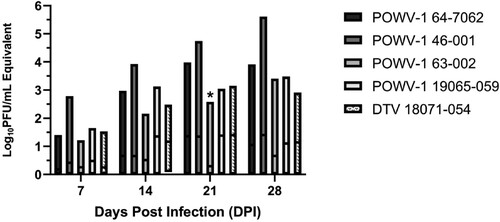Figures & data
Table 1. Recent and historic POWV-1 and DTV isolates collected in New York State.
Figure 1. Powassan virus (POWV-1) and deer tick virus (DTV) surveillance across New York State (NYS) between 2007-2019. All counties are sampled yearly for questing adult Ixodes scapularis and tested for POWV except for 4 counties outside of New York City. Counties shaded in gray represent those in which at least 1 tick has been positive for POWV and those in white represent no viral detection. Counties with stars indicate regions which recent NYS POWV-1 isolates were collected. Stars do not represent location within the county of the collection site and were placed concentrically.
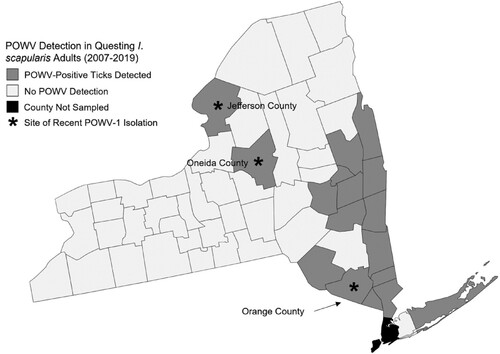
Figure 2. Maximum likelihood phylogeny of Powassan virus (POWV-1) and deer tick virus (DTV) based on full genome nucleotide sequences with tickborne encephalitis virus as an outgroup. Bootstrap values are displayed at each node (range: 38.9-100). Recent New York State (NYS) isolates (arrows); POWV-1 46-001, POWV-1 63-002, and POWV-1 19065–059 cluster with historic POWV-1 isolates.
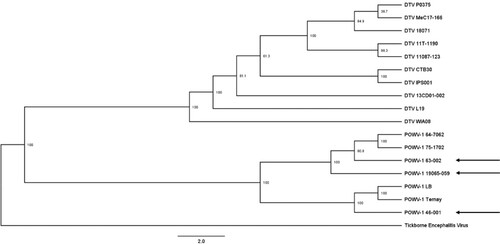
Table 2. Amino acid substitutions for recent Powassan virus (POWV-1) isolates from New York State (NYS) as compared to all available sequenced POWV-1 and deer tick virus (DTV) isolates. Unique substitutions are bolded. Lineage-2-like substitutions are highlighted in light grey.
Figure 3. Growth kinetics of Powassan virus (POWV-1) and deer tick virus (DTV) in baby hamster kidney (BHK-21) cells. Replication in BHK-21 is similar among all isolates. Data points represent mean +/- SEM (n = 3 per strain). Two-way ANOVA and Tukey’s multiple comparisons test (p = 0.8261).
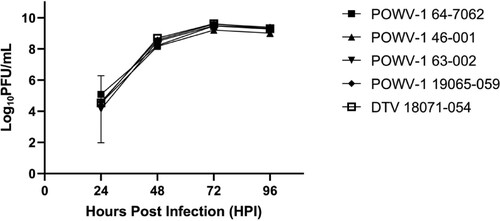
Figure 4. Overall infection rates of New York State (NYS) Powassan virus (POWV-1) and deer tick virus (DTV) isolates in Ixodes scapularis nymphs following immersion. Black shading represents the percent of infected ticks with POWV-1 or DTV and gray shading represent the percent of uninfected ticks. Infected ticks across all timepoints (7-,14-,21-, and 28-days post infection) were combined to calculate overall percentage of POWV-infected ticks (n = 80/strain for POWV-1 64–7062 and POWV-1 46-001, n = 90/strain for POWV-1 63-002, POWV-1 19065-059, and DTV 18071-054). POWV-1 64-7062, POWV-1 46-001, and POWV-1 63–002 displayed significantly lower infection rates compared to POWV-1 19065–059 and DTV 18071–054 (chi-squared test, **p < 0.01, ***p < 0.001).
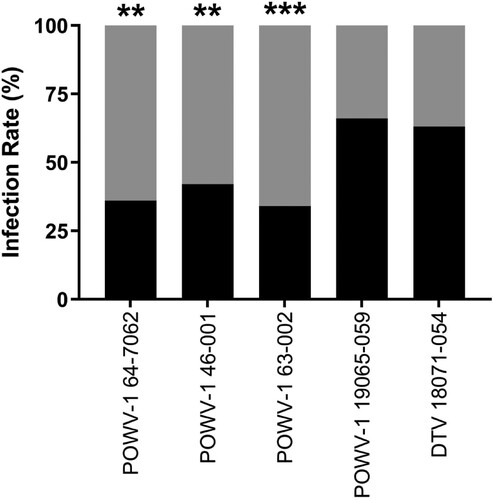
Figure 5. Growth kinetics of New York State (NYS) Powassan virus (POWV-1) and deer tick virus (DTV) isolates in Ixodes scapularis nymphs following immersion. Individual data include two separate, statistically equivalent experiments (t-test, p > 0.05, n = 4-19). Time (DPI) significantly influenced viral load (two-way ANOVA, p < 0.0001). Pairwise comparisons indicated statistical equivalence of viral load among strains, with the exception of POWV-1 63-002, which was significantly lower than all other strains at 21 DPI (two-way ANOVA, Tukey’s multiple comparisons, p < 0.017).
